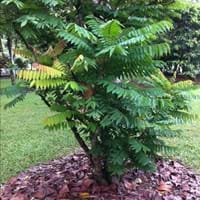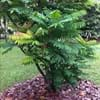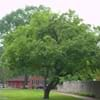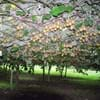Life Span
Perennial
Biennial and Perennial
Type
Flowering Plants, Herbs
Vegetable
Origin
Not Available
Europe, Western Asia
Types
Not Available
Not Available
Number of Varieties
Not Available
Habitat
moist forests, Mountains
waste ground, wastelands
USDA Hardiness Zone
4-9
4-9
Sunset Zone
1a, 1b, 2a, 2b, 3a, 3b, 4, 5, 6, 7, 8, 9, 10, 11, 12, 13, 14, 15, 16, 17, 18, 19, 20
A1, A2, A3, H1, H2, 1a, 1b, 2a, 2b, 3a, 3b, 4, 5, 6, 7, 8, 9, 10, 11, 12, 13, 14, 15, 16, 17, 18, 19, 20, 21, 22, 23, 24
Habit
Clump-Forming
Rosette/Stemless
Flower Color
Purple, Pink, Lavender
Yellow
Flower Color Modifier
Bicolor
Bicolor
Fruit Color
Brown
Brown, Black
Leaf Color in Spring
Green
Green
Leaf Color in Summer
Green
Green
Leaf Color in Fall
Green
Green
Leaf Color in Winter
Green
Not Available
Leaf Shape
Pinnate
Pinnate
Plant Season
Spring, Summer
Summer
Sunlight
Full Sun
Full Sun
Type of Soil
Clay, Loam, Sand
Loam
The pH of Soil
Acidic, Neutral, Alkaline
Neutral
Soil Drainage
Well drained
Well drained
Bloom Time
Late Spring, Summer
Summer
Tolerances
Drought, Salt
Drought
Where to Plant?
Ground
Ground, Pot
How to Plant?
Cuttings, Seedlings
Seedlings
Plant Maintenance
Medium
Medium
Watering Requirements
Needs very little water
Average Water Needs, Do Not over Water, Keep the ground moist but not water-logged
In Summer
Lots of watering
Lots of watering
In Spring
Moderate
Moderate
In Winter
Average Water
Average Water
Soil pH
Acidic, Neutral, Alkaline
Neutral
Soil Type
Clay, Loam, Sand
Loam
Soil Drainage Capacity
Well drained
Well drained
Sun Exposure
Full Sun
Full Sun
Pruning
cut main trunk every 5 years, Prune after flowering, Prune central stem, Remove damaged leaves, Remove dead branches, Remove dead leaves
Remove damaged leaves, Remove dead branches, Remove dead leaves
Fertilizers
All-Purpose Liquid Fertilizer, Apply 5-10-5 amounts, Compost
All-Purpose Liquid Fertilizer
Pests and Diseases
Nematodes, Red blotch, Trunk Rot
Aphids, Armyworm, Cutworms, Downy mildew, Pitch canker, Red blotch
Plant Tolerance
Drought
Drought
Flower Petal Number
Single
Not Available
Fragrant Bark/Stem
No
Yes
Foliage Texture
Medium
Fine
Foliage Sheen
Glossy
Matte
Attracts
Butterflies, Leaf Hoppers
Butterflies
Allergy
Itchiness, Not Available, Sore Throat
Stomach burn
Aesthetic Uses
Beautification
Not Available
Beauty Benefits
Anti-ageing, Good Cleanser, Remove blemishes, Removes pimples
Blood purifying, Good for skin
Environmental Uses
Air purification, Food for animals, Food for birds, soil stabilisation
Air purification
Medicinal Uses
Cough, Haemorrhages, Laxative, Obesity, Tonic
Aphrodisiac
Part of Plant Used
Fruits, Leaves
Root
Other Uses
Added to salads, Can be boiled and seasoned, pickled, Culinary use
Food for animals, Used as a nutritious food item
Used As Indoor Plant
No
Yes
Used As Outdoor Plant
Yes
Yes
Garden Design
Container, Cutflower, Mixed Border, Rock Garden / Wall, Wildflower
Edible, Herb, Vegetable
Botanical Name
Averrhoa bilimbi
PASTINACA sativa
Common Name
Bilimbi, Mimbro
Parsnip
In German
bilimbi
Pastinake
In Spanish
bilimbi
Chirivía
In Greek
bilimbi
Είδος δαυκίου
In Portuguese
bilimbi
cherivia
In Polish
bilimbi
Pasternak
In Latin
Rondo Beardtongue
parsnip
Phylum
Magnoliophyta
Magnoliophyta
Class
Magnoliopsida
Magnoliopsida
Family
Oxalidaceae
Apiaceae
Clade
Angiosperms, Eudicots, Rosids
Angiosperms, Asterids, Eudicots
Tribe
Not Available
Not Available
Subfamily
Not Available
Not Available
Number of Species
Not Available
Season and Care of Bilimbi and Parsnip
Season and care of Bilimbi and Parsnip is important to know. While considering everything about Bilimbi and Parsnip Care, growing season is an essential factor. Bilimbi season is Spring and Summer and Parsnip season is Spring and Summer. The type of soil for Bilimbi is Clay, Loam, Sand and for Parsnip is Loam while the PH of soil for Bilimbi is Acidic, Neutral, Alkaline and for Parsnip is Neutral.
Bilimbi and Parsnip Physical Information
Bilimbi and Parsnip physical information is very important for comparison. Bilimbi height is 38.10 cm and width 25.40 cm whereas Parsnip height is 15.20 cm and width 7.60 cm. The color specification of Bilimbi and Parsnip are as follows:
Bilimbi flower color: Purple, Pink and Lavender
Bilimbi leaf color: Green
Parsnip flower color: Yellow
- Parsnip leaf color: Green
Care of Bilimbi and Parsnip
Care of Bilimbi and Parsnip include pruning, fertilizers, watering etc. Bilimbi pruning is done cut main trunk every 5 years, Prune after flowering, Prune central stem, Remove damaged leaves, Remove dead branches and Remove dead leaves and Parsnip pruning is done Remove damaged leaves, Remove dead branches and Remove dead leaves. In summer Bilimbi needs Lots of watering and in winter, it needs Average Water. Whereas, in summer Parsnip needs Lots of watering and in winter, it needs Average Water.





